FORT RUCKER, Ala., Feb. 10, 2011 -- More than 200 leaders in the Army Aviation Branch descended upon Fort Rucker, Ala., Jan. 31 - Feb. 3 to guide the future of aviation for 2011 and beyond.
Maj. Gen. Anthony G. Crutchfield, U.S. Army Aviation Center of Excellence and Fort Rucker commanding general, hosted the Aviation Senior Leaders Conference 2011, attended by aviation leaders and war fighters, brigade combat team commanders, and other Army Center of Excellence leaders, Army staff and National Guard and Reserve leaders, along with acquisition and concept developers and program managers.
Crutchfield began the conference with a short video and the question, "What about the future security environment'" He asked that everyone attending the conference keep that question in mind as they work through the sessions.
He encouraged the leaders to take a long view of the future of Army aviation.
"Our enemy is adaptive," Crutchfield said. "So are we. Our enemy is resilient. So are we. Our enemy is committed. So are we, today. Will we be tomorrow' And that's what I'd like to tee up today to get us really thinking this week -- about the future of our branch and the future of our Army. We've got to stop thinking solely about Iraq and Afghanistan, and think a little into the future."
Crutchfield said that in order to move the branch forward, it needed to choose an aim point and move toward it. He used the Comanche and the UH-1 "Huey" as examples.
It took about eight years to go from the idea of the UH-1 to full production, according to Crutchfield. By the end of the Vietnam War, more than 7,000 had flown in the conflict and 16,000 had been built. In contrast, after 22 years of trying to produce the Comanche, two had been built and the project was canceled.
Retired Army Vice Chief of Staff Gen. Richard A. Cody explained why the Comanche had to be cut.
"We kept changing the requirements, and changing the requirements," Cody said. "We had to cut from somewhere because we had to fund the ground army, whether it was (up armor) plates for the Humvees or it was night vision goggles. There were huge demands on the budget, and the only way to fix Army Aviation was to take the $14.5 billion and get a commitment from the Department of Defense to not touch it when we cancelled it."
Crutchfield's argument was that in addition to all the other issues with the Comanche, the aim points kept moving.
"That's my point. We cannot afford to do that again," Crutchfield said. "I'm saying we should never be in the position to make that decision again. The country can't afford it and our branch cannot afford it.
"I say the time is now to start looking at what we're going to have for our future," he said. "We've got to start it now. And we've got to develop and we've got to move to that aim point. We've got to have a way to move to that aim point quickly or we're at risk."
Crutchfield added that incremental improvements on old aircraft cannot significantly advance and increase range, speed, payload and survivability that the branch needs in its equipment for the future security environment.
"Unlike how we kept moving the Comanche's aim point, we've got to put the marker down and not move it. We have to accept what's good enough. And then field it, and then we make the improvements to it," he said. "Does that sound familiar to you' Because that's the way we've always done it. If we didn't, we wouldn't have a Longbow Block 3 Apache; we'd have had the perfect Apache in 1985."
Crutchfield told the leaders he needed their help to improve the branch.
"I'm the chief of the branch, I'm not the branch," he said. "We are the branch. And if anyone thinks that Fort Rucker is going to come up with all the solutions to all the problems in aviation, they're wrong. We'll lead the branch - that leaves your focus downrange. We'll lead the branch, but I need your thoughts."
Some of the issues leaders looked at during the three-day conference included, Army aviation training, reducing aviation accidents, aviation future force design, and professional military education and Soldier development.
During the final outbrief, Crutchfield thanked the leaders for their efforts. He said while Soldiers are the ones doing the heavy lifting, none of it would get done without the leadership they provide.
"It is also because of you," he said. "I understand our Soldiers are doing great things, but right now I want to thank you because they could not do it without your leadership."
Related Links:
STAND-TO!: Full-Spectrum Aviation: Resilient and Adaptive for the Future Security Environment
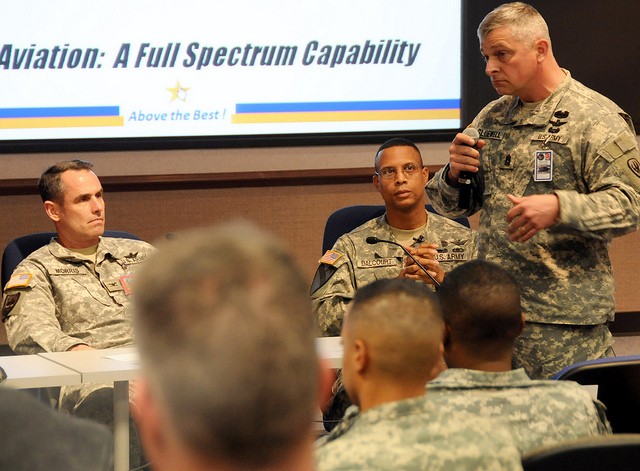
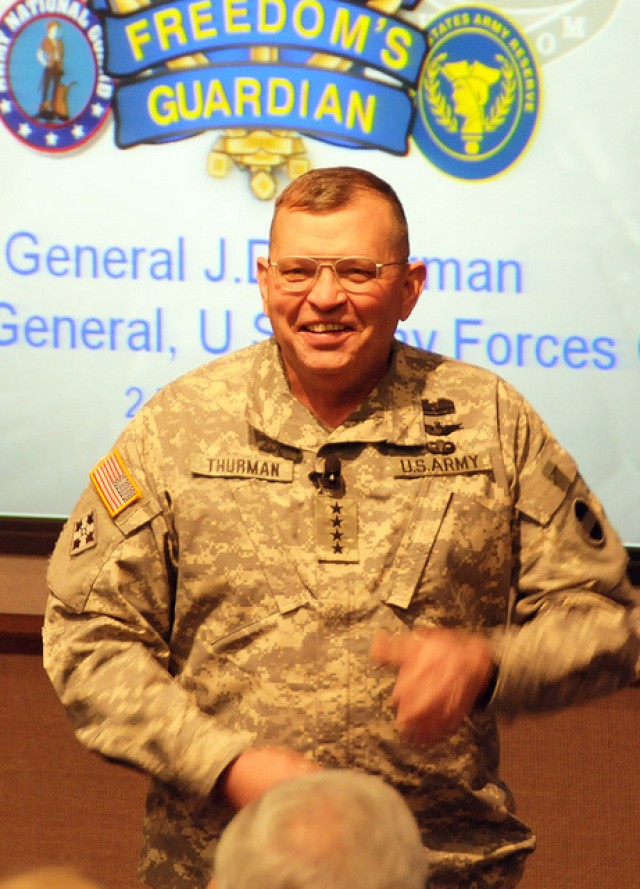

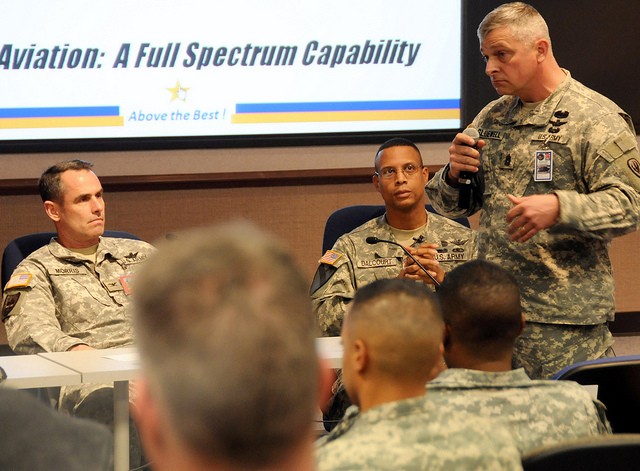
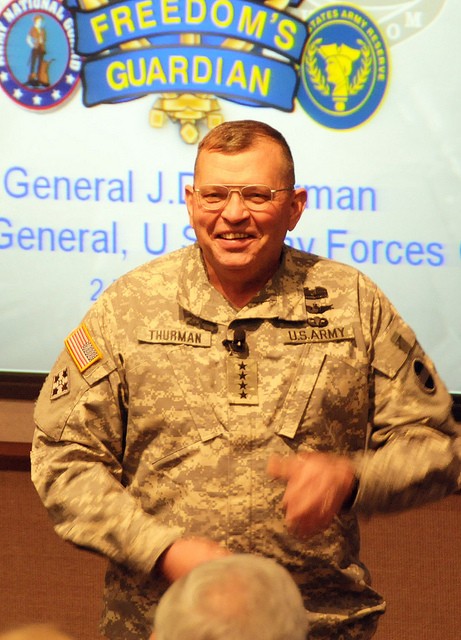
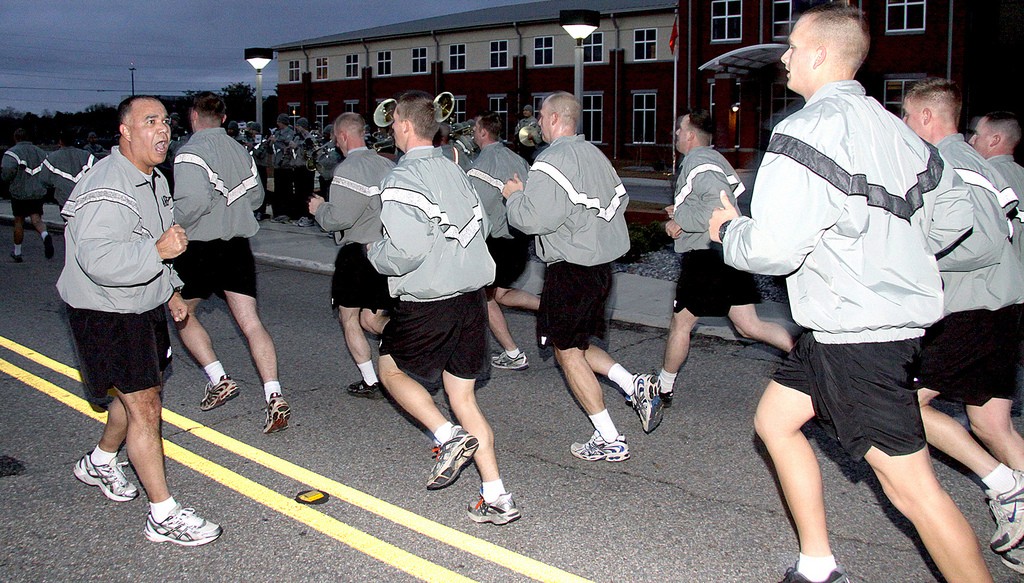
Social Sharing